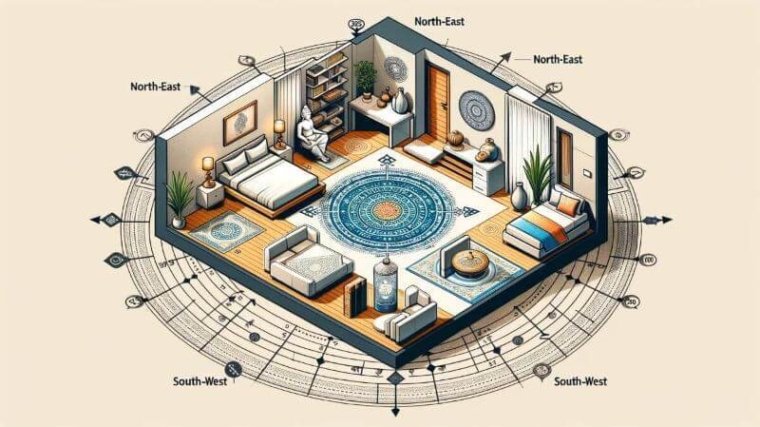Unlocking Tranquility: Exploring the Essence of Traditional Vastu Shastra
In the grand tapestry of ancient Indian wisdom, Vastu Shastra stands as a cornerstone, weaving together the intricate balance between architecture and cosmic energies. Rooted in centuries-old traditions, Traditional Vastu Shastra is a profound science that guides the design and layout of spaces to foster harmony, balance, and well-being.
Origins and Philosophy of Traditional Vastu
Traditional Vastu Shastra finds its roots in the Vedic texts, particularly the Atharvaveda, which contains the principles of architecture and construction. The philosophy revolves around the interconnectedness of the individual, the dwelling, and the cosmos. Traditional Vastu views the home not merely as a physical structure but as a living entity that influences the lives of its inhabitants.
Five Elements and Directions: The Core Principles
At the heart of Traditional Vastu lies the concept of the Panchabhutas, the five elements – Earth, Water, Fire, Air, and Space. The proper alignment and balance of these elements are essential for positive energies to flow seamlessly. Traditional Vastu also emphasizes the significance of cardinal directions and their corresponding deities, aligning spaces with cosmic forces for enhanced well-being.
Vastu Purusha Mandala: Cosmic Blueprint
The Vastu Purusha Mandala, a cosmic energy grid, is a key aspect of Traditional Vastu. It outlines the sacred geometry that defines the placement of rooms, doors, and windows. The energy map, resembling the cosmic man lying on the ground, symbolizes the harmonious integration of the individual with the universe.
Application in Architecture and Design
Traditional Vastu principles extend beyond theoretical concepts and find practical application in architectural design. From the selection of a plot to the orientation of rooms, each decision is guided by the aim of harnessing positive energies and maintaining balance. Traditional Vastu also emphasizes the use of natural materials and sustainable practices in construction.
Traditional Vastu Remedies and Rituals
In the journey of Traditional Vastu, rituals and remedies play a vital role. Cleansing ceremonies, such as Vastu Purification and Navagraha Puja, are conducted to ward off negative energies and invite positivity. The strategic placement of Vastu-friendly elements like yantras, crystals, and sacred plants further enhances the vibrational frequency of the space.
Modern Applications and Revival
While deeply rooted in tradition, Traditional Vastu has not remained static. Modern architects and designers are embracing its principles to create spaces that seamlessly blend ancient wisdom with contemporary lifestyles. The revival of interest in Traditional Vastu signifies a growing recognition of the impact our surroundings have on our overall well-being.
Conclusion: Harmonizing Lives, Enriching Spaces
Traditional Vastu, with its profound philosophy and timeless principles, continues to guide individuals and communities towards harmonious living. As we navigate the complexities of the modern world, embracing the wisdom of Traditional Vastu offers a pathway to balance, tranquility, and a deeper connection with the cosmic energies that surround us. It’s not just about architecture; it’s a journey of aligning our spaces with the rhythm of the universe, creating homes that resonate with positive vibrations and enrich our lives in profound ways.




